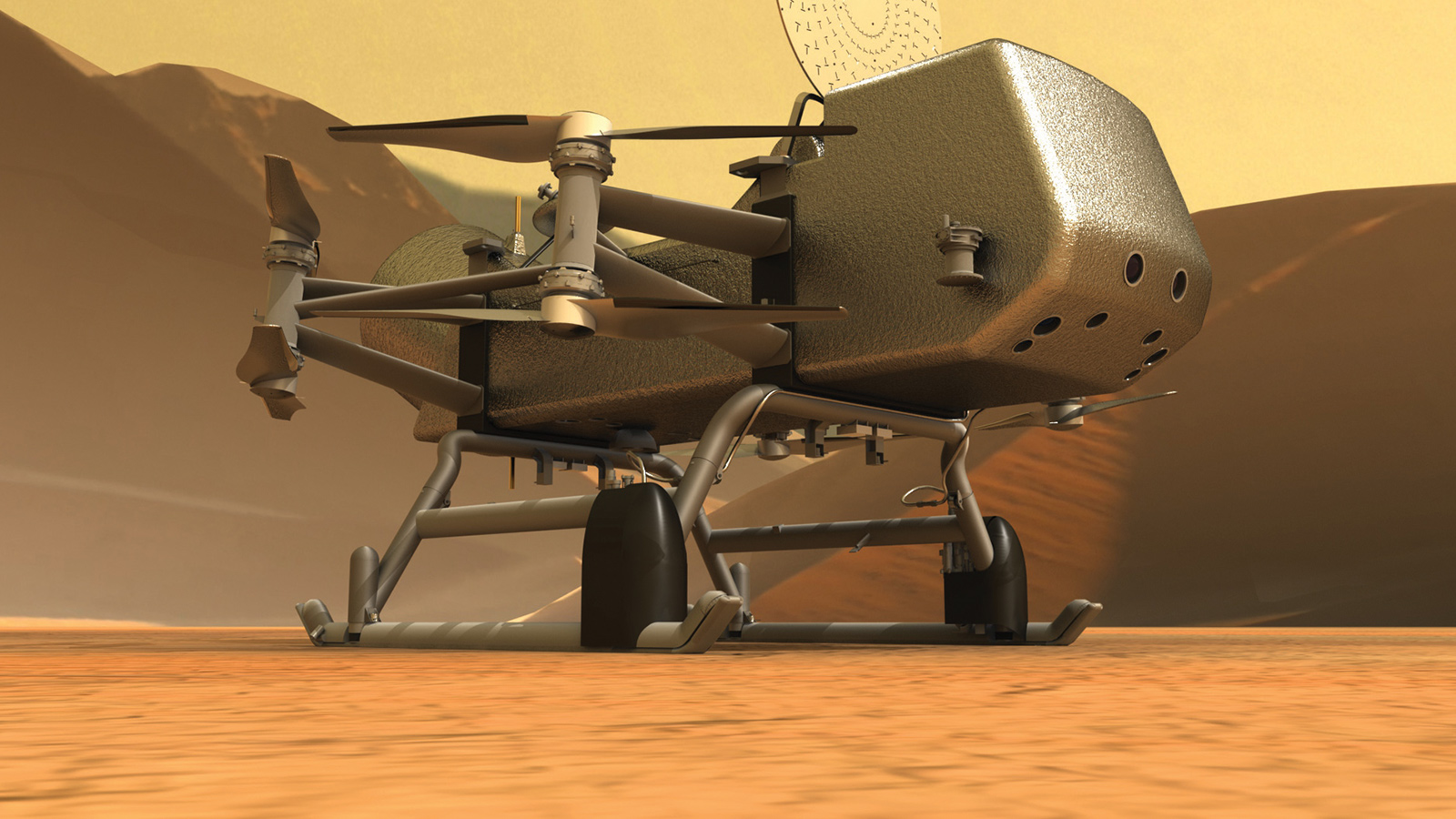Stay Up to Date
Submit your email address to receive the latest industry and Aerospace America news.
The Thermophysics Technical Committee promotes the study and application of mechanisms involved in thermal energy transfer and storage in gases, liquids and solids.
Dragonfly, a mission to send a robotic octocopter lander to Saturn’s largest moon, was selected in June for NASA’s New Frontiers 4 program. The Johns Hopkins Applied Physics Laboratory leads the Dragonfly mission, whose goal is to study prebiotic chemistry and habitability of the ocean world that is Titan. Due to the dense, calm atmosphere and low gravity on Titan, an octocopter is an ideal vehicle to explore a variety of locations. Thick insulation and heat from the Multi-Mission Radioisotope Thermoelectric Generator, or MMRTG, maintain the lander interior at relatively benign temperatures, typical for space components throughout the mission. The MMRTG is particularly effective on Titan as it emits heat along with charging the batteries that provide the power required for flight. Dragonfly requires sustained heat for thermal management because it can’t rely on solar power on Titan. The moon’s distance from the sun and hazy atmosphere combine for a surface temperature of minus 179 degrees Celsius.
Working with scientists led by NASA’s Ames Research Center in California, Dragonfly’s team is also proposing an instrumentation suite to obtain aerothermal data relevant to thermal protection system, or TPS, design during the atmospheric entry phase. The entry instrumentation package aims to measure near-surface and in-depth TPS temperatures, surface pressure, total heat flux and radiative heat flux.
Multiple advancements were made this year in the area of high-speed flight. In January, DARPA began an initiative called the Materials Architectures and Characterization for Hypersonics, or MACH, program. MACH seeks to develop new materials and designs for cooling the hot leading edges of hypersonic vehicles flying more than five times the speed of sound, Mach 5. The first goal is to develop fully integrated leading-edge solutions for use in near-term hypersonic vehicles. In May, researchers at Sandia National Laboratories finished high-speed experiments that for the first time characterized the vibrational effect of the pressure field beneath a turbulent hypersonic region. The pressure field is key to understanding how intermittent turbulent spots affect vehicles flying at Mach 5 or higher, and these advancements in understanding may lead to better vehicle design.
In March, Reaction Engines Limited, or REL, completed the first phase of high-temperature ground testing for its pre-cooler heat exchanger. To rapidly cool air entering a gas turbine engine under supersonic or hypersonic flight conditions, the pre-cooler pumps gaseous helium through several thousand microtubes. Tests were conducted at an REL test facility in Colorado, where the pre-cooler was subjected to the exhaust stream from a General Electric J79 turbojet engine. The pre-cooler was able to quench 420-degree Celsius intake air to around 100 degrees in less than 0.05 second, for a heat transfer rate of approximately 1.5 megawatts at inflow conditions corresponding to a freestream Mach number of 3.3. The pre-cooler is intended as a component of the REL Sabre hybrid air-breathing rocket engine and for other hypersonic flight applications including vehicle thermal management and extending the operable Mach number range of gas turbine engines.
Stay Up to Date
Submit your email address to receive the latest industry and Aerospace America news.




